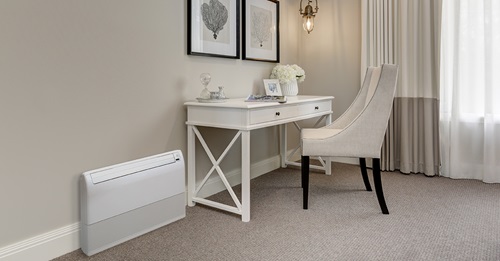CEILING FANS VS AIR CONDITIONING

When it comes to dealing with heat in Australia, most households turn to either air conditioning or fans. There’s no doubt that each can make a big difference to comfort, but they work in different ways to achieve this. Fans circulate the air to create a breeze and cooling effect, while air conditioners change the room temperature by cooling or heating the air. The best option for your home ultimately comes down to your budget, comfort preferences and the size of your space(s).
If you can’t decide whether ceiling fans or aircon is the right option, we’ve compared them in key areas such as cost of operation, consumption and comfort.
Which Uses More Electricity: a Fan or an Air Conditioner?
For families wanting to save on energy bills, fans tend to come out on top. A ceiling fan uses about 50–75 watts* per hour, while a small air conditioner uses 500 to 1,500 watts* and a ducted system for cooling an entire home can use several thousand watts (kilowatts) an hour.
Ceiling Fan vs Air Conditioner: Power Consumption at a Glance
Appliance | Average Power Use (per hour) | Typical Usage Scope |
Ceiling fan | 20–75 watts* | Single room, air circulation only |
Small air conditioner | 500–1,500 watts* | Single room cooling mode, depending on size. |
Ducted air conditioning unit | 2,000–6,000+ watts* | Ducted units rated 3-8 kW or more for whole-home cooling. |
*Note: These estimates are for cooling purposes. Actual usage may vary based on room size, insulation, unit settings and efficiency.
As you can see, fans are the most economical way to make a single room feel cooler, but bear in mind that they won’t significantly change the room’s temperature.
While air conditioners cost more to run, they deliver true cooling. If you’re looking to cool just one room, like a bedroom or study, then a split unit is a great option. Not to mention, reverse cycle units can also heat, giving you year-round use from your air conditioner, whereas fans are generally only useful during the warmer months.
If you want to ensure every room in your home is at a constant temperature, then a ducted air conditioning unit is the way to go. Many new Fujitsu models come with an eco mode and smart controls, which can help reduce power consumption.
Fan vs Air Conditioner Costs
When comparing ceiling fans vs air conditioning, the difference in cost isn’t just about power bills. Most fans are cheaper to buy and install, but they only do one job. A ceiling fan can’t heat a room and is unlikely to add much to the overall value of a home.
While reverse cycle air conditioners are the larger outright investment, the fact that they deliver year-round comfort helps many households justify the cost. Air conditioning is widely considered an amenity that adds to a home’s liveability, especially with Australian summers, with the potential to even increase its resale value.
Is it Better to Sleep with an Air Conditioner or Fan?
Room temperature has a direct impact on sleep quality, with the majority of people sleeping better in cooler bedrooms. Both ceiling fans and aircon can help, but the best choice depends on the season, your personal comfort and whether you’re a light sleeper.
Many light sleepers prefer fans because they create a gentle breeze and don’t dramatically change the temperature. Fans also create a steady white noise, which can help mask small sounds that might otherwise wake or startle a light sleeper.
For very hot or humid nights, air conditioning is often the better option because it regulates both temperature and humidity, helping prevent wake-ups from discomfort. With an air conditioner, you can set it to the optimal sleeping temperature to keep the room comfortable and your night restful.
Modern units also come with features like eco or sleep modes, as well as the benefits of using air conditioner timers. These allow you to manage cooling through the night, reducing noise and avoiding overcooling.
Fans vs Air Conditioners: Cooling Effects
Ceiling fans and air conditioning achieve comfort in different ways. A fan provides moving air that cools the skin, whereas an air conditioner lowers the room’s temperature directly.
In Australia’s climate, this difference matters. On mild days, a fan might be all you need. But during heatwaves or in humid conditions, home air conditioners are much more effective at keeping indoor spaces comfortable. An air conditioner also filters the air and can control humidity, which fans can’t do.
That being said, fans can still play a role. Using a ceiling fan alongside your air conditioner improves airflow. This combination can reduce energy costs while keeping the room cool.
Air Con or Fan: What’s Right for Your Home?
Choosing between ceiling fans and air conditioning depends on your lifestyle and your budget. Fans are inexpensive to run and can make a room feel cooler, but air conditioners, especially reverse cycle air con, provides real temperature control and heating for year-round benefits.
If you’re ready to upgrade your comfort at home, Fujitsu has a wide range of air conditioning solutions, which can suit every space. Explore our systems or contact us today for expert advice on finding the right option for your home.


.tmb-tmb420.jpg?sfvrsn=5c4be2e1_1)


